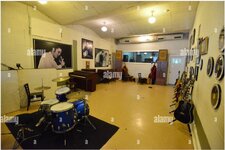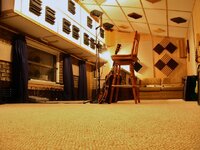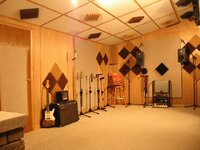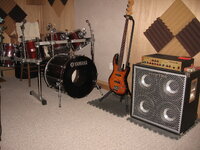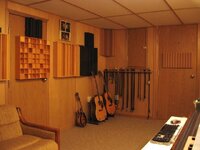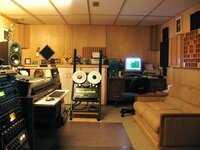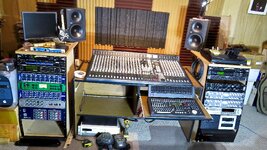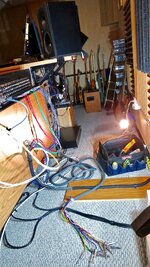elbandito
potential lunch winner
Hi everyone. It’s been a while since I’ve been to the forum… glad to see it’s still kicking!
I’m in the midst of building a studio. I’ve got just under 800 sq ft with 9ft ceilings, laminate flooring and a mostly rectangular shape. I’m doing what I can with baffling and such and plan to use a calibration mic in the next couple of weeks to fine tune reflections. I’ve built a few gobos and can build more as necessary.
What I’m after with this post, is info on how live rooms in the 60s and 70s were set up. I’m not super interested in the super clean (some, like myself, might say sterile) sound of modern recordings. I want character and controlled mic bleed. Not necessarily a Motown or Abbey Road sound exactly but definitely in that “world,” so to speak.
I did some searching just to see if I could find some info on how some of these old rooms were set up but useful results were quite limited. I know that I’ll probably need to build a half height wall (I’m thinking like 4’ high) to separate the bulk of the drum sound from the rest of the room but what else should I do?
Here’s the space:
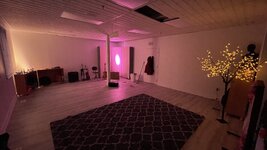
There is some room (13’ x 10’) behind the camera in this shot, and I am planning (read: thinking about) building a wall here and making a dead room for vocals:
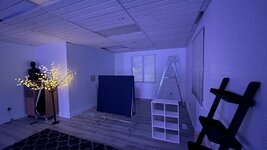
So. Do any of you have tips on how to design this space for the vibe that I’m after? What would you do if you had this place? I’d also be very interested in any videos or photos of 60s and 70s studio live rooms that you might want to share.
Thanks in advance for your help!
I’m in the midst of building a studio. I’ve got just under 800 sq ft with 9ft ceilings, laminate flooring and a mostly rectangular shape. I’m doing what I can with baffling and such and plan to use a calibration mic in the next couple of weeks to fine tune reflections. I’ve built a few gobos and can build more as necessary.
What I’m after with this post, is info on how live rooms in the 60s and 70s were set up. I’m not super interested in the super clean (some, like myself, might say sterile) sound of modern recordings. I want character and controlled mic bleed. Not necessarily a Motown or Abbey Road sound exactly but definitely in that “world,” so to speak.
I did some searching just to see if I could find some info on how some of these old rooms were set up but useful results were quite limited. I know that I’ll probably need to build a half height wall (I’m thinking like 4’ high) to separate the bulk of the drum sound from the rest of the room but what else should I do?
Here’s the space:

There is some room (13’ x 10’) behind the camera in this shot, and I am planning (read: thinking about) building a wall here and making a dead room for vocals:

So. Do any of you have tips on how to design this space for the vibe that I’m after? What would you do if you had this place? I’d also be very interested in any videos or photos of 60s and 70s studio live rooms that you might want to share.
Thanks in advance for your help!

